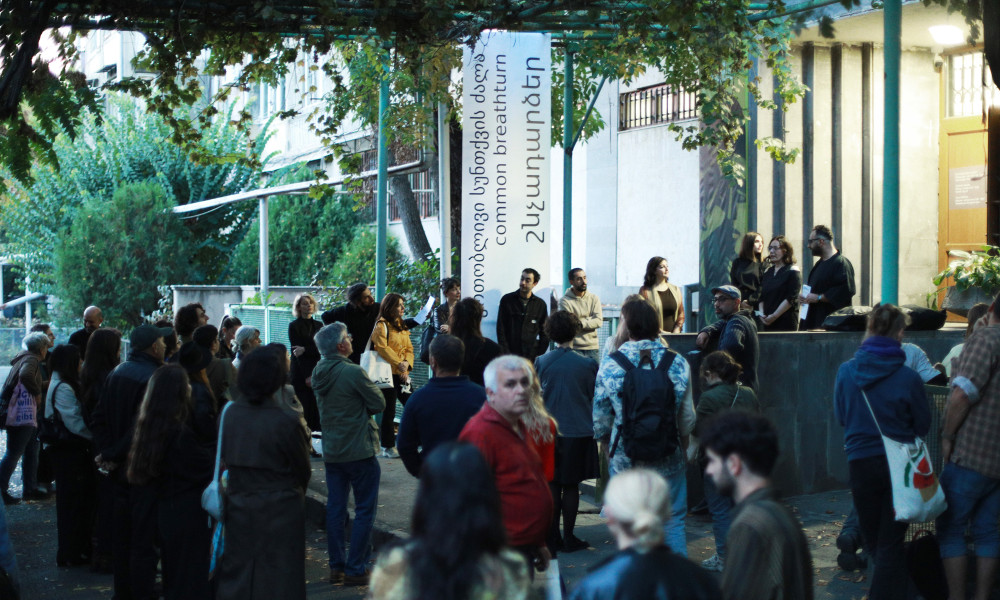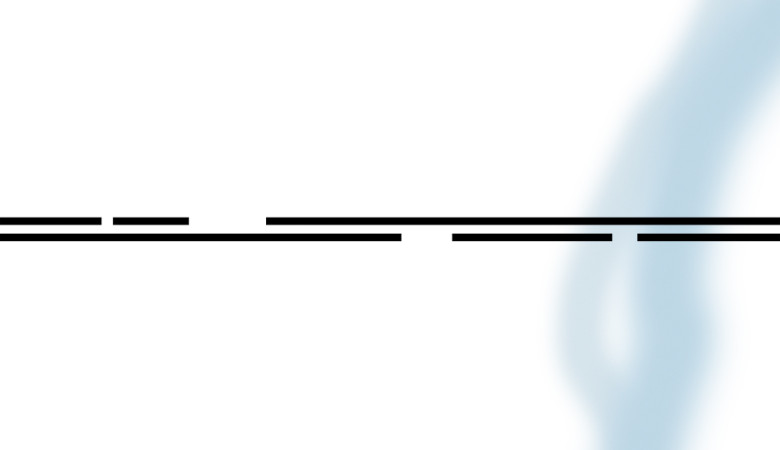On October 25, the Common Breathturn exhibition was presented at the Giotto Museum, developed within the framework of CSN Lab’s “Art for Regional Dialogue” initiative. The Armenian–Georgian contemporary art exhibition brought together eight artists to reflect on the unsettling events that the region has experienced in the recent past.
Following the opening, a public discussion took place with the participation of the artists and curators, focusing on the cultural field and the future development of such collaborative programs.
Held in the museum’s Diana Ukleba Hall, the event — initiated by CSN Lab — was not the first of its kind; and, like its predecessors, it sought to highlight the museum’s essential role as a unique and rare space in Yerevan for Armenian–Georgian dialogue, as well as strengthening this exchange and transforming it into a platform for broader regional conversations.
In their opening remarks, the exhibition’s curators, Lali Partenava and Tigran Amiryan, underscored the anxieties caused by the political developments unfolding across the region in recent years, emphasizing the need for the continuity of cultural dialogue and its important role.
To emphasize this metaphor of unease, both the exhibition’s introductory text and title draw on Paul Celan’s poetry collection Atemwende or “Breathturn”. This emotional and sensory condition parallels the region’s realities and challenges, which resonate in both the curatorial text and the artists’ works. The artworks address themes such as migration and displacement, borders and isolation, post-traumatic memory, and ongoing geopolitical tension.
During the event, the curators also spoke about the continuing repression and clashes in Georgia, citing Paul Celan’s translator Zviad Ratiani, who was recently sentenced to two years in prison due to his political activism. For CSN Lab, the intersection of art and rights has always been central, and this project once again served as a platform to raise awareness about human rights violations in the region.
The works of the eight participating artists — David Grigoryan, Hasmik Tangyan, lusine talalyan, Mariam Akubardia, Nino Zirakashvili, Narek Barseghyan, Roubina Margossian, and Mishiko Sulakauri — engaged in dialogue through a range of formats, from installation and painting to video, textile art, photography, and collage.
By continuing to bring artists together and foster connections across politically challenging borders, CSN Lab remains committed to the belief that cultural dialogue is one of the key pathways to regional development, and it continues its work dedicated to strengthening this dialogue.


